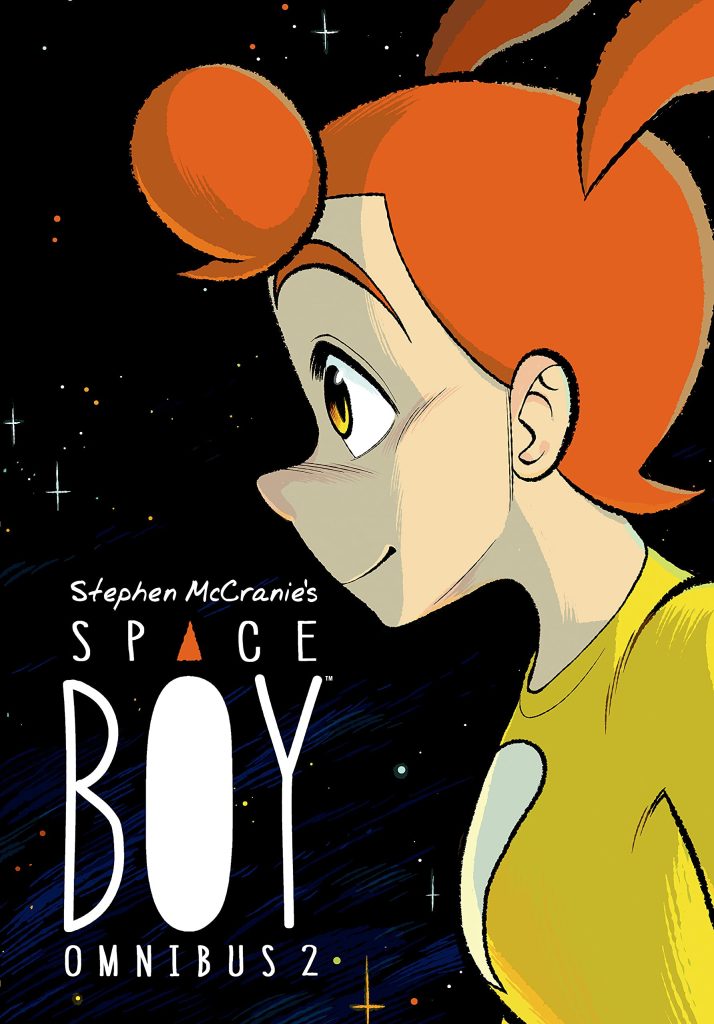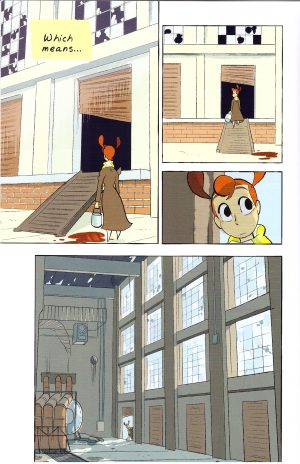Review by Ian Keogh
Young adult drama Space Boy runs two plots concurrently. Considerably more space is occupied following Amy as she adjusts to high school life after a thirty year journey to Earth in cryogenic stasis, making new friends, starting new activities and adjusting to new technology. Running alongside is her gradual connection with the emotionally repressed Oliver, not well liked by others.
A downside to much of Omnibus 1 was Stephen McCranie not mastering the needs of telling a story in small snippets for a webpage while also considering those small snippets are going to be combined as a graphic novel. That’s now rectified, and despite events in this volume only taking place over five days, there’s a purpose to every scene, whether it’s action or emotional. His charming art, though, hit the spot from the beginning, and there’s a few chances to expand horizons briefly away from the character-rich cartooning into other areas, and McCranie nails the right tone every time. His back of the book essay explaining visual motifs offers a possible hint about what’s to come when connected with some research on Amy’s part.
While the lives, enthusiasm and problems of Amy’s friends are now beginning to resonate, the mystique is perpetuated by Oliver and his profound detachment. The volume begins with Amy’s visit to his home, where readers, if not Amy, learn a lot more about the troubles in Oliver’s life, the restrictions he lives under, and why art seems his only release. McCranie ensures some matters aren’t disclosed, but enough is to recast Oliver as a tragic figure with cause for his pain.
Not that the remainder of the cast have it easy. Only the driven Meisha lacks some sort of sorrow in her life, and that could just be because it’s not yet been revealed. McCranie compresses a lot into five days, and as before a lovely aspect is how he draws attention to what we take for granted. That doesn’t apply to a sequence when Amy almost experiences flight, but because she’s not from Earth she’s never seen or felt snow before, and the pages spent with her joyful discovery delight.
It’s also worth highlighting how Anita Magaña’s book design really comes into focus with this second edition. The simple covers reflect McCranie’s clear and simple internal art, and the care taken with the spines featuring characters and numbers is thoughtful. After the main stories McCranie includes some interesting process material and a few more strips about the young Amy.
Almost every earlier reservation about Space Boy has now evaporated as McCranie’s become a more complete storyteller, with the one remaining problem perhaps irreconcilable with his form of storytelling. It’s that when someone slips out of sight, it can be several hundred pages before they’re seen again. Nevertheless, the young adult readership at whom this is aimed ought to be captivated and heading straight for Omnibus 3. This is a reasonably priced package for well over 700 pages, but if preferred the content is available in smaller chunks as Space Boy 4, 5 and 6.





